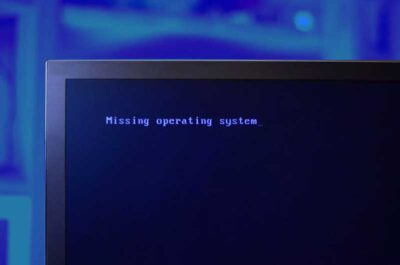There are many reasons why an operating system or software might be functioning abnormally. Here are some of the most common causes:
 Hardware problems: A malfunctioning hardware component, such as a hard drive, memory, or processor, can cause the operating system or software to crash, freeze, or run slowly.
Hardware problems: A malfunctioning hardware component, such as a hard drive, memory, or processor, can cause the operating system or software to crash, freeze, or run slowly.
Software conflicts: Two or more software programs that are not compatible with each other can cause problems with the operating system. This is often caused by installing a new program without first uninstalling an old program that conflicts with it.
Viruses or malware: A virus or malware infection can also cause the operating system or software to malfunction. This is because viruses and malware can corrupt files or data that the operating system or software needs to function properly.
Corrupted system files: System files are essential for the operating system to function properly. If these files become corrupted, it can cause the operating system to crash or malfunction.
Insufficient system resources: If the operating system or software does not have enough memory, storage space, or CPU power, it can cause problems. This is often the case when you try to run too many programs at once or when you are using a large file or program.
If you are experiencing problems with your operating system or software, it is important to first identify the cause of the problem. Once you have identified the cause, you can take steps to fix it. For example, if the problem is caused by a hardware problem, you may need to replace the malfunctioning hardware component. If the problem is caused by a software conflict, you may need to uninstall the conflicting program. If the problem is caused by a virus or malware infection, you may need to run antivirus or anti-malware software. If the problem is caused by corrupted system files, you may need to restore the system files from a backup. And if the problem is caused by insufficient system resources, you may need to add more memory, storage space, or CPU power to your computer.
Here are some additional tips for troubleshooting abnormally functioning operating systems or software:
Restart your computer: Sometimes a simple restart can fix problems with the operating system or software.
Check for updates: Make sure that your operating system and software are up to date. Updates often include bug fixes that can improve performance and stability.
Run a virus scan: A virus scan can help to identify and remove any viruses or malware that may be causing problems with the operating system or software.
Create a system restore point: A system restore point is a snapshot of your computer’s system files and settings. If you ever have problems with your operating system or software, you can restore your computer to a previous point in time when everything was working properly.
Contact technical support: If you have tried all of the above and you are still having problems, you may need to contact technical support for your operating system or software. They may be able to help you troubleshoot the problem and find a solution.
